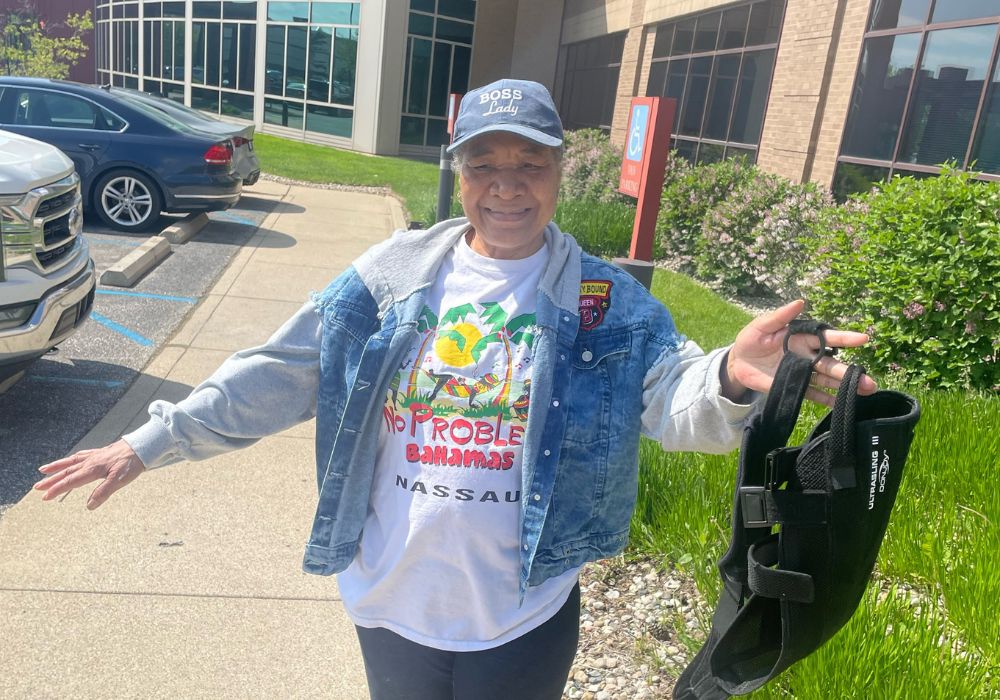By: Chris Bales, MD
Many of my shoulder patients come to the office with discomfort. Some tell me their shoulder pain causes are related to rotator cuff tear injuries because they heard this from a friend who had similar symptoms or already went to see their primary care doctor and got an MRI. Most think this diagnosis means they need surgery.
While arthroscopic rotator cuff tear repairs are one of the most common surgeries I do, not all tears need to be fixed.
In this blog article, I’ll talk a little more about the rotator cuff, what it is, what the spectrum of rotator cuff pathology consists of and what some of the treatment options are.
Shoulder anatomy
To understand what causes a rotator cuff tear, it’s essential first to understand the function of the rotator cuff and how it works.
Your rotator cuff consists of four muscles that arise from your scapula (the shoulder blade) and turn into a tendon as they insert on the greater tuberosity of your humeral head.
They help elevate and rotate the arm. We will focus on the two most common tendons that are torn: the supraspinatus (elevates the arm) and the infraspinatus (externally rotates the arm).
How do people get rotator cuff tears?
A patient’s medical history is an important aspect of the initial evaluation as it can help the shoulder doctor steer early treatment. Tears are either traumatic or non-traumatic.
The patient who slips on the ice and lands on their shoulder, elbow or outstretched hand—and now can’t raise their arm after the fall—typically has suffered an acute rotator cuff tear.
Non-traumatic tears typically present a gradual onset of worsening pain over months. Sometimes, they suddenly get worse after a change in activity level, such as when you:
- start a new workout program
- work on a house project that requires a lot of lifting
- do some fall clean up tasks out in the yard
Make an appointment with a shoulder specialist
Traumatic tears make sense, but how exactly do you develop a non-traumatic rotator cuff tear?
This often comes as a surprise to people when I tell them, but asymptomatic tears, which is a tear that doesn’t hurt, are very common. Some suggest that rotator cuff pathology is part of the natural aging phenomenon.
Rotator cuff tear researchers have found that asymptomatic tears are prevalent in 10% of people in their 50s, 20-30% of individuals in their 60s and 50-80% of those in their 80s.
They also found that 50% of patients over 65 with a painful rotator cuff tear have an asymptomatic tear in their other arm.
How often do asymptomatic tears develop pain?
Over two to five years, 30-40% of patients will develop pain, but not all tears are like comparing apples to apples
A rotator cuff tear may be full thickness, completely off the bone, or partial thickness. And partial thickness tears can have even more variation. They may be tiny (millimeters in size) or high grade (and close to full-thickness).
Additional factors that help physicians decide the best course of treatment for these types of tears include:
- Patient age
- Occupation
- Activity level
- Medical history
If a rotator cuff tear was asymptomatic before, we might be able to get it back to that state. Tears typically don’t heal, but they can go back to where they aren’t causing pain.
What is the treatment for a rotator cuff tear?
Treatment of a non-traumatic torn rotator cuff consists of rest, activity modification, ice and use of over-the-counter medications such as Tylenol and NSAIDs for pain.
People with shoulder pain at night often find sleeping in a more upright position helpful, for example, sleeping in a recliner chair.
By the time I see patients in the office, they have often tried some things already. If they are still having acute pain, a steroid (cortisone) injection can be considered.
You can also consider a formal course of physical therapy for a rotator cuff tear; however, some patients prefer to try a home exercise program initially.
Learn more about OrthoIndy shoulder treatments
When do you need surgery?
Surgery is required with a traumatic rotator cuff tear. Patients under the age of 65, who can’t elevate their arm over shoulder level or have difficulty rotating the arm, are often good candidates for acute surgical treatment.
I recommend surgery for patients with non-traumatic tears who have failed conservative treatment and continue to have pain that affects their function and sleep.
One of the biggest reasons I’ve found drives patients to consider surgery is an inability to sleep. Surgery to repair a rotator cuff tear is very successful, but it involves a long rehab process.
Most of my patients are in a sling for six weeks. Return to more normal function takes closer to four to six months.
Many patients who have had a rotator cuff tear repaired will tell you it took them close to a year to get back to where they thought their shoulder should be.
Find out what’s really causing your shoulder pain
If your shoulder pain causes you to miss out on normal day-to-day activities, we can help. Request an appointment online or call OrthoIndy at 317.802.2000 to book an appointment with one of our shoulder specialists.
If your shoulder injury or condition is recent, you can walk right into one of our OrthoIndy Urgent Care locations for immediate care. For rehabilitation and physical therapy, no referral is needed to see one of our physical therapists.





